A lot of people were still trying to leave Humahuaca, so the earliest bus we could get that had assigned seats was at 10:10AM. Since we gain an hour into Bolivia, the 15:30 train was not yet out of question. Since the bus originated four hours south, it showed up at 10:35, just within our margin of tolerance. We had our favorite seats at the front on the second flour. It turned out to be the best bus and bus ride in Northern Argentina; great views and comfortable. We arrived in La Quiaca around 1PM Argentina/12Noon Bolivia.
La Quiaca/Villazon is at 3500m/11600ft. We had no trouble walking from the bus terminal to the border under the hot midday sun, which had been a concern for me. There was a line of about twenty people leaving Argentina. It moved unusually slow for a border exit. I tried really hard holding back all my worries about getting the Bolivian visa "on arrival" at the other side of the International Bridge. As Americans, a $135 visa is required to entering Bolivia. We have seen the list of visa requirements, some we have down hard, others we had doubts.... After almost an hour on the Argentine border, it took less than a minute for the two of us to get our exit stamps. The officer did look at our passports a little extra hard, maybe because we already had 4 entrance and 3 exit stamps from Argentina all within the last two months!
Walking across a 50-meter the bridge we were right at the Bolivian border control. This is our moment of truth that we have been fretting over since last summer. Along our travels we even met a young Chinese woman who was declined a Bolivian visa, but we think she held a Chinese passport. Inside the office, there was no line. John held up our passports to make evident that we are American. The officer came out of his booth and said to us, almost apologetically, "you know you have to pay for a $135-visa as Americans?" We wanted to laugh, but held back and replied positively. Then he asked, "do you have a photo?" In Quito, we had special passport photos made with red background. I realized then we had wasted our money as our existing stash of passport photos would have been more than sufficient. When we produced our photos, the officer was most relieved and gave us two forms to fill out. Apparently some people are completely opposite of us, not even aware visas are required for Americans. We had our yellow fever shots for nothing, no need for hotel reservations, transportation ticket out of Bolivia, proof of financial ability...or all our worries.
When it came time to actually pasting the visa stamps in our passports, the officer could not find any in the stash of stickers in his drawer and told us to wait. In Buenos Aires, we had gone to the Bolivian Consulate. The visa officer there explained that he had run out of visa stamps at the moment, but he was expecting some the following week and assured us getting the visas at the border will be easy. We started to get anxious again -- what if we have to wait at the border for a week for the stamps -- we had been worried about catching the train. An eternity later, probably 5-10 minute in real time, our names were called. John handed over the 270 US dollars we had been hording for the past six months. Our passports were handed back with the stamp. We were in!
We started making our way to the train station. We took our time changing our Argentinian pesos into Bolivian bolivianos, but it turned out that all the money changers offered the same rate. We drew some more money from the ATM, since there is no ATM in Tupiza. By the time we got to the train station, only the 1st class (executive) and 3rd class (popular) were available. That was not a problem, since everything we read said the train is VERY CROWDED, we can go 1st class. However, when we got to the front of the line, there was only 3rd class. For a three-hour ride, the cost is $2US. I was not about to ride cattle style for three hours! I'll take the bus. We got out of line and headed out of the train station towards the bus terminal. I could tell that John was really disappointed. We started arguing. I didn't like the fact that my inhibitions were holding us back either. Three steps out of the train station, we agreed that we would buy the tickets and if the conditions turned out to be unacceptable to me, we would take the bus. We showed our passports and got back a handwritten ticket with car number and seat numbers, which was a good sign, but there had been plenty of times that did not mean anything.
We went to the platform and found our car. There was an orderly line at the door. The shades were down, but there were definitely regular, facing bench seats in there. When we were finally let on the train, all the Bolivians ended up in one end of the car, and foreigners the other. Our seats were at the end of the car, farthest away from the bathroom. When the train pulled out of the station ten minutes later, our end of the car was less than half full and we were all comfortably spread out. We made friends with the two young Uruguayans across the aisle, and a young Argentinian woman came to visit as well. They were the best of train companions. We were offered mate and John got to try chewing coca leaves.
The supposedly chronically late train arrived in Tupiza on time. We made a beeline for the Hotel Mitru where we had a reservation only because of the visa requirement. The hotel turned out to be fine and we got the only room in town that has a decent wi-fi signal. We went to went bed knowing there was a breakfast buffet waiting for us in the morning which turned out even better than we had expected, although admittedly our standards have been reset in Chile and Argentina.
View from bus window as we head north to the border.
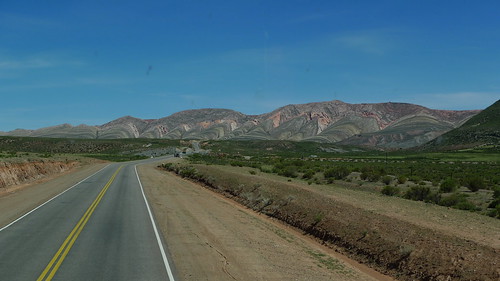
The Popular(3rd)Class car is not so popular today.
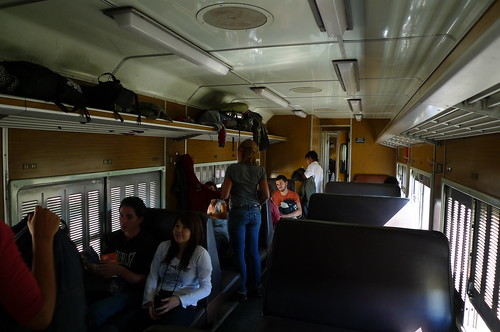
Enjoying the journey.

John sips from the mate gourd offered by our new Uruguayan amigos.
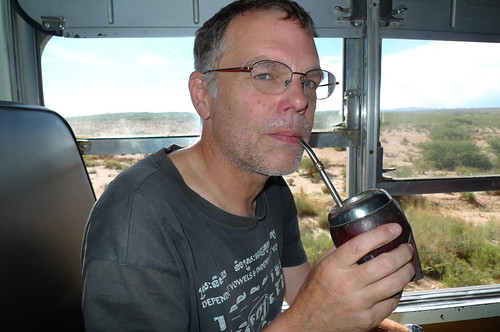
Our first view of the rock formations near Tupiza is from the train.
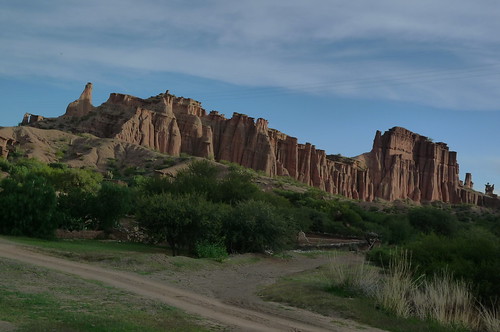
Another view from the train.
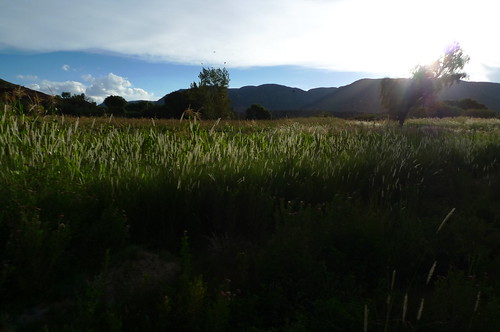


2 comments:
I appreciate this post, because I have been trying to figure out the same thing about the Bolivian visa on entry. This was very helpful!
Carmen,
Glad the post was helpful. Enjoy your trip!
Post a Comment